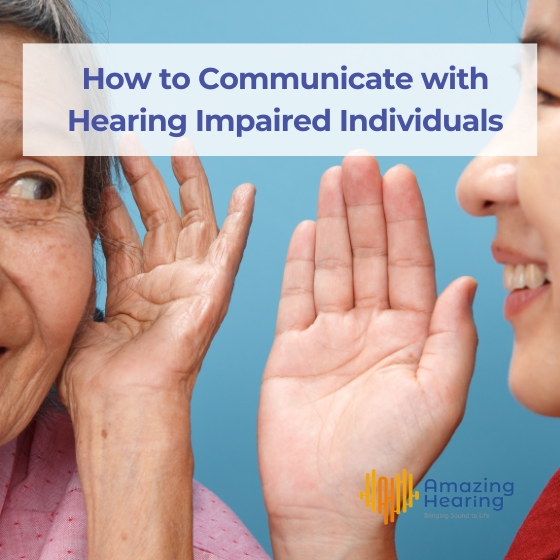Hearing impairment, also known as hearing loss or deafness, affects millions of people worldwide. It can range from mild to profound and can have a significant impact on a person’s ability to communicate effectively with others.
How can one effectively communicate with someone with a hearing impairment? This guide will provide some tips and strategies to facilitate communication with individuals who are deaf or hard of hearing.
Types of Hearing Impairments
Before we dive into the communication strategies, it is important to understand the different types of hearing impairments. There are three main types: conductive, sensorineural, and mixed.
- Conductive hearing loss is caused by a problem in the outer or middle ear, such as a blockage or damage to the eardrum. This type of hearing loss can often be treated medically or surgically.
- Sensorineural hearing loss is due to damage to the inner ear or auditory nerve and cannot be reversed. It is usually permanent and may require hearing aids or other assistive devices.
- Mixed hearing loss is a combination of both conductive and sensorineural hearing loss.
Additionally, there are different degrees of severity for each type, ranging from mild to profound. Understanding the specific type and degree of someone’s hearing impairment can greatly aid in communication.
Tips for Communicating with Hearing Impaired Individuals
1) Face the Person Directly
When speaking to someone with a hearing impairment, make sure to face them directly and maintain eye contact.
This will allow the person to see your facial expressions and gestures, which can help understand the tone and context of the conversation.
2) Speak Clearly and at a Moderate Pace
Speak clearly and at a moderate pace, but avoid shouting or exaggerating your words. This can distort your lip movements and make it difficult for the person to understand you.
3) Use Visual Aids
Visual aids, such as written notes or drawings, can help convey information to someone who is deaf or hard of hearing.
These visual cues can supplement verbal communication and provide additional context.
4) Reduce Background Noise
Background noise can be distracting and make it difficult for someone with a hearing impairment to focus on what is being said.
If possible, move to a quiet area or eliminate unnecessary noise.
5) Utilize Assistive Devices
There are many assistive devices available that can help individuals with hearing impairments communicate more effectively.
These include hearing aids, cochlear implants, and even smartphone apps that can transcribe speech in real-time.
6) Be Patient and Ask for Clarification
It is important to be patient and understanding when communicating with someone who has a hearing impairment.
It may take them longer to process information, or they may need you to repeat yourself or clarify certain points.
Takeaway
Communication is a vital part of human interaction and can be challenging for individuals with hearing impairments.
However, by following these tips and being mindful of the specific needs of each person, we can create a more inclusive and accessible environment for everyone to communicate effectively.
Remember to always be patient, respectful, and open-minded when communicating with individuals who are deaf or hard of hearing. With a little effort and understanding, we can bridge the communication gap and build stronger connections with those around us.




